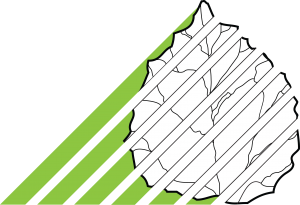Climate change, characterized by amplified frequency and amplitude of heat waves, as well as altered precipitation patterns in a number of regions around the globe, has emerged as one of the most important issues of our time (IPCC, 2014). The main approach in adaptation and mitigation of climate change is substantial and sustained reductions in GHGs, which pose economic, technological, social, institutional and political challenges in implementation of new climate policies. The result of such implementation of climate policies into different sectors emerged with new concepts/strategies, such as Climate Smart Forestry (CSF). This concept is based on “from science to policy” approach in order to strategically reduce GHGs emission through an adaptive forest management. Unpredictable fires, like these happening nowadays in Amazonia and Siberia that accelerate climate change across the planet even more, are also part of climate change scenarios, therefore importance and urgency of implementation of these “climate smart” concept is nowadays more than evident and necessary.
The level of “smartness” of these concepts is determined by wittiness and skillfulness of implementation of new measureable parameters which will in the real time accurately track and monitor the effect of environmental stresses caused by climate change on forest ecosystems.
However, concept of “climate smart forestry” contains a gap in knowledge about tree’s underlying adaptation mechanisms to climate change as well as it lacks understanding of complex patterns of abiotic and biotic stress resilience of different forest tree species. Among these issues, the significance of the whole belowground microbiome (especially mycorrhizal fungi) in alleviation of both abiotic and biotic stress in forest trees seems to be neglected and this aspect has not been comprehensively investigated. Another challenge of development and implementation of CSF concept in modern forestry lies in linking novel scientifically based findings with policy makers and adaptive forest management strategy makers. Therefore, the MYCOCLIMART project will be focused on the following specific objectives:
Objective 1. To evaluate the effects of mycorrhyza on pedunculate oaks’ (Quercus robur L.) biological response to abiotic stress factors.
To achieve this objective, two experiments under controlled conditions will be established with the main underpinning aim to characterize effects of mycorrhizal fungi on biological responses and acclimation mechanisms of Q. robur seedlings to heat and drought stress. One of the main aims will be to elucidate underlying biochemical defense mechanisms linked with polyamine metabolism, different antioxidant enzymes and osmolytes on transciptomic and metabolic level in order to evaluate influence of mycorrhyzal fungi on modulation of Q. robur ability to cope with imposed drought and heat. Measuring the level of modulation, plasticity and adaptability of oaks biological response to changed climate conditions and elucidation of adaptation mechanisms induced by intriguing interaction between oaks roots and mycorhizal fungi, will greatly contribute to development of “climate smartness” in forestry of the Republic of Serbia.
Objective 2. To explore bioprotective properties of mycorrhyza in suppression of Quercus robur L. disease caused by powdery mildew (Erysiphe alphitoides (Griffon & Maublanc 1912)).
To reach this objective, Q. robur seedlings inoculated and non-inoculated with mycorrhiza will be infected by E. alphitoides, one of the most harmful pathogens in the juvenile development stage of oak seedlings. The activities linked to this objective will be aimed to answer the questions: (1) how mycorhhiza modulates oaks’ resistance towards powdery mildew through phenomenon of mycorrhiza induced resistance (MIR) and (2) how it affects expression and activities of biosynthetic and catabolic polyamines related enzymes, as well as accumulation of polyamines in host plant? Additional partial objective within this one will be to investigate how mycorrhiza alters composition and amounts of emitted volatile organic compounds (VOCs) and how that contributes to oak’s defense mechanisms and overall resistance to powdery mildew. The higher level of objective of the MYCOCLIMART project will be to form a multidisciplinary research team and to strengthen research capacities of project team members by applying learning though research approach and through excessive exchange of skills and knowledge among project participants with different scientific backgrounds. Another objective is to implement new cutting-edge technique such as high performance liquid chromatography coupled with diode array detection (HPLC-DAD) and therefore significantly increase excellence and the state of the art of the Institute of Lowland Forestry and Environment (ILFE) laboratory enabling it to perform broad spectrum of metabolic, transcriptomic, enzymatic analysis that are necessary for comprehensive research related to abiotic and biotic stress tolerance in trees.




